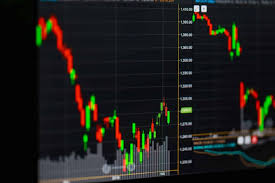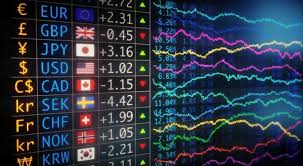
In the fast-paced world of currency trading, Forex algorithmic trading has emerged as a significant technique employed by traders around the globe. By leveraging complex mathematical models and high-speed computing, algorithmic trading enables traders to execute large volumes of trades at lightning speed and with remarkable precision. forex algorithmic trading Trading Asia has made strides in educating traders on how to harness the power of algorithms to enhance trading performance. This article delves into the fundamental aspects of Forex algorithmic trading, the advantages it offers, common strategies, and key considerations for traders looking to implement algorithmic strategies in their trading operations.
What is Forex Algorithmic Trading?
Forex algorithmic trading, often referred to simply as algorithmic trading or algo trading, is the use of automated computer programs and systems to execute trades in the foreign exchange market. These trading algorithms are programmed with a set of rules that dictate when to buy or sell a currency pair based on various market conditions. Traders use algorithms to capitalize on market inefficiencies, respond to price movements, and implement complex trading strategies that would be nearly impossible to execute manually.
The Advantages of Forex Algorithmic Trading
The benefits of algorithmic trading in the Forex market are numerous, making it an attractive option for traders of all experience levels. Here are some of the key advantages:
- Speed: Algorithms can analyze market data and execute trades within milliseconds, allowing traders to capitalize on fleeting market opportunities.
- Accuracy: Automated systems reduce the risk of human error, ensuring trades are executed based on predefined parameters without emotional interference.
- Backtesting: Traders can backtest their strategies using historical data to evaluate their effectiveness before deploying them in live markets.
- Discipline: Algorithmic trading promotes discipline by adhering strictly to an established trading plan without succumbing to emotional reactions or impulsive decisions.
- 24/5 Trading: Algorithms can operate continuously, allowing traders to take advantage of opportunities that arise outside of regular trading hours.
Understanding Forex Market Dynamics

Before delving into algorithmic trading strategies, it’s essential to grasp the nuances of the Forex market. The Forex market is highly volatile and influenced by various factors, including economic data releases, geopolitical events, and changes in monetary policy. Currency pairs are affected by the relative strength of the economies and the trade relationships of the countries involved.
Understanding these influences can help traders design algorithms that react appropriately to market fluctuations, ensuring they maximize potential profits while minimizing risks.
Common Algorithmic Trading Strategies in Forex
There are several popular algorithmic trading strategies that Forex traders utilize. Here are a few noteworthy ones:
- Trend Following: This strategy involves identifying and following ongoing trends in the market. Algorithms detect upward or downward price movements and execute trades in line with the prevailing trend.
- Mean Reversion: Mean reversion strategies are based on the assumption that prices will revert to their historical mean over time. Algorithms identify overbought or oversold conditions and execute trades accordingly, betting that prices will return to their average level.
- Arbitrage: Arbitrage takes advantage of price discrepancies between different currency pairs or trading platforms. Algorithms can quickly identify these discrepancies and execute trades to profit from the inefficiencies in pricing.
- News-Based Trading: It is a strategy that relies on news and economic indicators. Algorithms monitor news feeds and execute trades based on the expected impact of news releases on currency prices.
Key Considerations for Implementing Forex Algorithms
While algorithmic trading offers numerous advantages, there are several factors that traders should consider when developing and implementing their trading algorithms:
- Market Volatility: Forex markets can exhibit extreme volatility, especially around economic data releases. Traders must ensure their algorithms account for this volatility to avoid unexpected losses.
- Risk Management: It is crucial to incorporate robust risk management strategies into algorithms. Setting stop-loss orders and managing position sizes can help protect against significant losses.
- Broker and Slippage: The choice of broker can significantly impact the performance of algorithmic trading. Traders should select brokers that offer low latency, high execution speeds, and favorable trading conditions to minimize slippage.
- Market Conditions: Algorithms should adapt to changing market conditions. Regular testing and optimization are crucial to maintaining their effectiveness over time.
Developing Your Own Forex Trading Algorithm
For traders interested in creating their own Forex trading algorithms, the process typically involves several steps:
- Define Your Strategy: Clearly outline the trading strategy you plan to automate. This includes defining entry and exit points, risk management rules, and trade sizing.
- Select a Programming Language: Choose a suitable programming language for developing your algorithm. Popular choices include Python, R, and C++, each offering distinct advantages based on your preferences and needs.
- Backtest the Algorithm: Use historical market data to test the algorithm’s performance under various market conditions. This step is crucial for assessing the potential profitability and risk of your strategy.
- Optimize the Algorithm: Fine-tune the parameters of the algorithm based on backtesting results and performance metrics to enhance its effectiveness.
- Deploy in a Demo Environment: Before launching the algorithm in a live trading account, test it in a simulated environment to evaluate its real-time performance without risking capital.
- Monitor and Maintain: Once deployed, continuously monitor the performance of the algorithm and make adjustments as necessary in response to changing market conditions or results.
Conclusion
Forex algorithmic trading represents a revolutionary approach to trading that harnesses the power of technology to enhance decision-making and trading efficiency. While it offers significant advantages, traders must approach algo trading with caution, ensuring they implement robust strategies, risk management practices, and continuous monitoring. By understanding the dynamics of the Forex market and effectively developing algorithms, traders can position themselves to capitalize on the vast opportunities presented in the ever-evolving world of currency trading.
